Top 10 Best Bee Friendly Plants for Pots

If you’re looking to fill your pots with bee-friendly plants, you’re in luck. This article will help you discover the Top 10 Best Bee-Friendly Plants for Pots that attract pollinators and thrive in small spaces. From colorful blooms to fragrant herbs, each plant serves as a magnet for bees, supporting their survival while beautifying your garden. Whether you’re a beginner or seasoned gardener, you’ll find easy-to-grow options perfect for your patio, balcony, or backyard. Let’s explore the best choices for creating a bee-friendly environment in pots.
Lavender
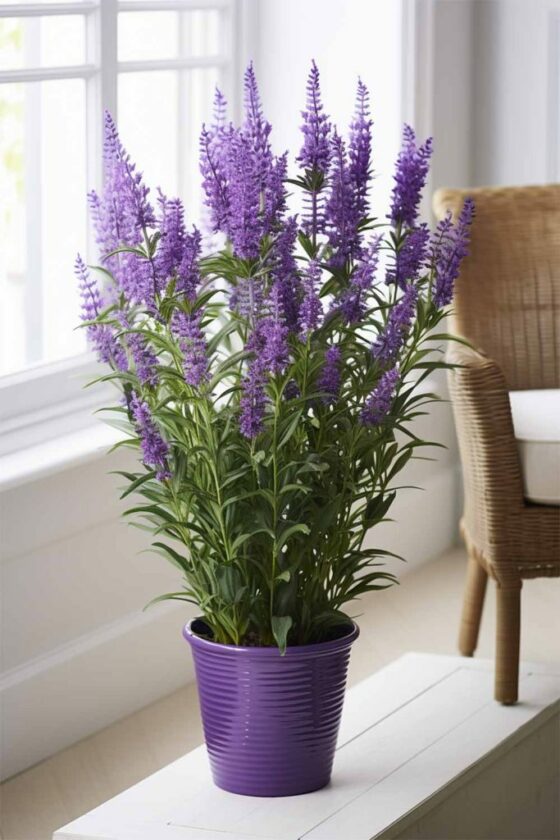
Lavender is one of the best choices for attracting bees to your pots. Its vibrant purple flowers not only look stunning but also produce a sweet nectar that bees can’t resist.
By placing lavender in your garden or patio, you’re creating a bee-friendly environment that supports pollination. Make sure to choose a sunny spot, as lavender thrives in full sunlight and well-drained soil.
Water it moderately; overwatering can harm the plant. Regular pruning helps maintain its shape and encourages more blooms. Plus, the delightful fragrance of lavender enhances your outdoor space, making it an enjoyable area for you too.
Salvia
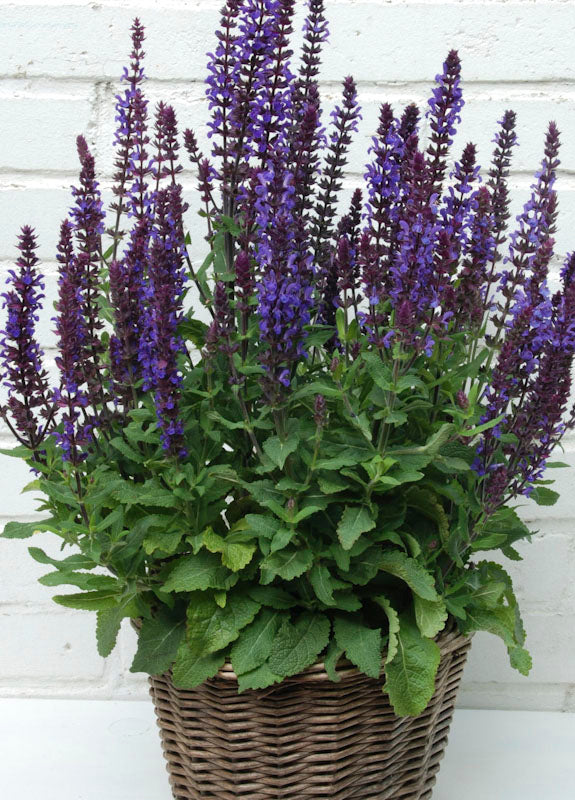
If you’re looking to expand your bee-friendly garden, consider adding salvia to your pots. This vibrant plant not only brightens your space but also attracts a variety of pollinators, particularly bees.
With its tubular flowers, salvia offers easy access for these important insects, making it a must-have for your garden. You can choose from various species, such as Salvia nemorosa or Salvia splendens, which thrive in sunny spots and well-drained soil.
Salvia is drought-tolerant once established, so you won’t have to stress about constant watering. Plus, its long blooming season means bees will have a reliable food source throughout the warmer months.
Plant salvia in colorful pots, and watch as your garden buzzes with life!
Coneflower
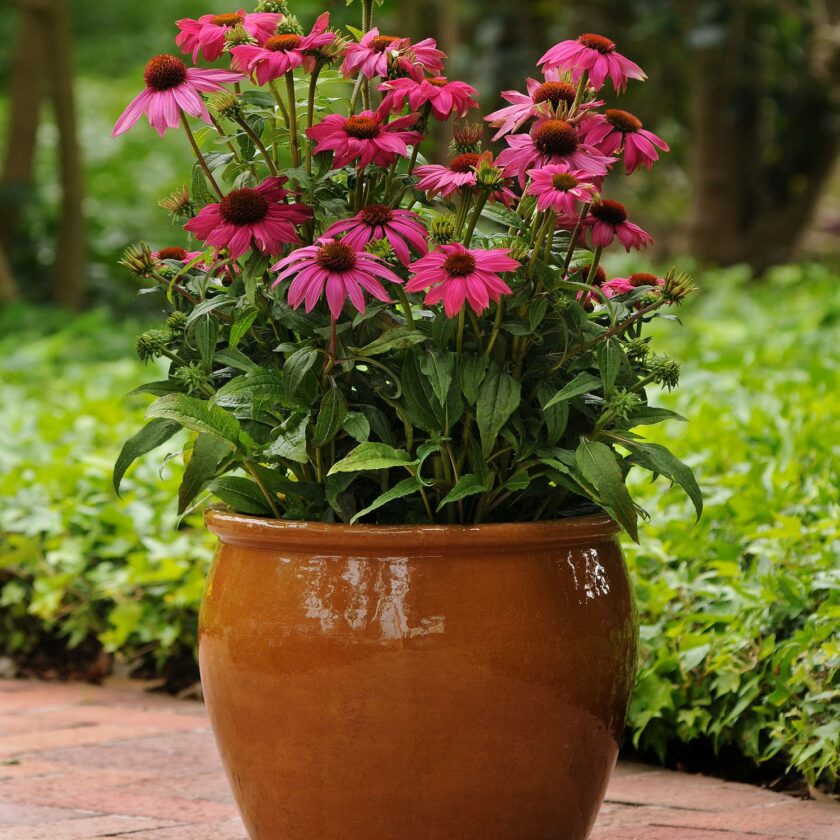
With its striking petals and sturdy presence, coneflower is an excellent addition to your bee-friendly pots. Known for attracting pollinators, these vibrant flowers bloom from summer into fall, providing a steady food source for bees.
You’ll love how easy they’re to care for; coneflowers thrive in well-drained soil and full sun, making them perfect for containers. Their tall, upright stems can stand out beautifully in your garden, and they come in various colors, including purple, pink, and white.
Just be sure to deadhead spent blooms to encourage more flowers. Plus, coneflowers are drought-tolerant once established, making them low-maintenance.
Zinnias

Zinnias are a vibrant choice for your bee-friendly pots, bursting with color and life throughout the summer.
These annual flowers thrive in full sun and tolerate heat, making them perfect for sunny patios or gardens. With a variety of shapes and sizes, you can easily find zinnias that fit your style, from tall, sturdy stems to compact blooms.
Their bright petals attract honeybees and other pollinators, providing food sources during the warm months. Plus, zinnias are low-maintenance; just water them regularly and deadhead spent flowers to encourage more blooms.
Marigolds
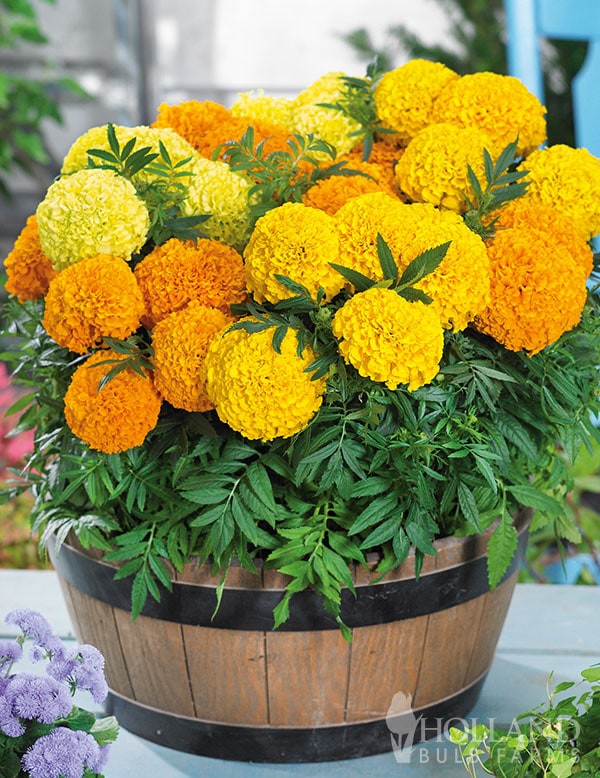
Why not consider marigolds for your bee-friendly pots? These vibrant flowers not only brighten up your outdoor space but also attract a variety of pollinators, especially bees. Their bright orange and yellow hues make them hard to miss, drawing in bees with their rich nectar.
Marigolds thrive in sunny spots, making them perfect for containers on patios or balconies. They’re also easy to care for, requiring minimal maintenance. Just ensure they’re watered regularly but not over-saturated.
Plus, marigolds can help repel pests, providing a dual benefit for your garden. By adding marigolds to your pots, you’re creating a welcoming environment for bees while enjoying their cheerful blooms all season long.
Don’t hesitate—plant some marigolds today!
Bee Balm
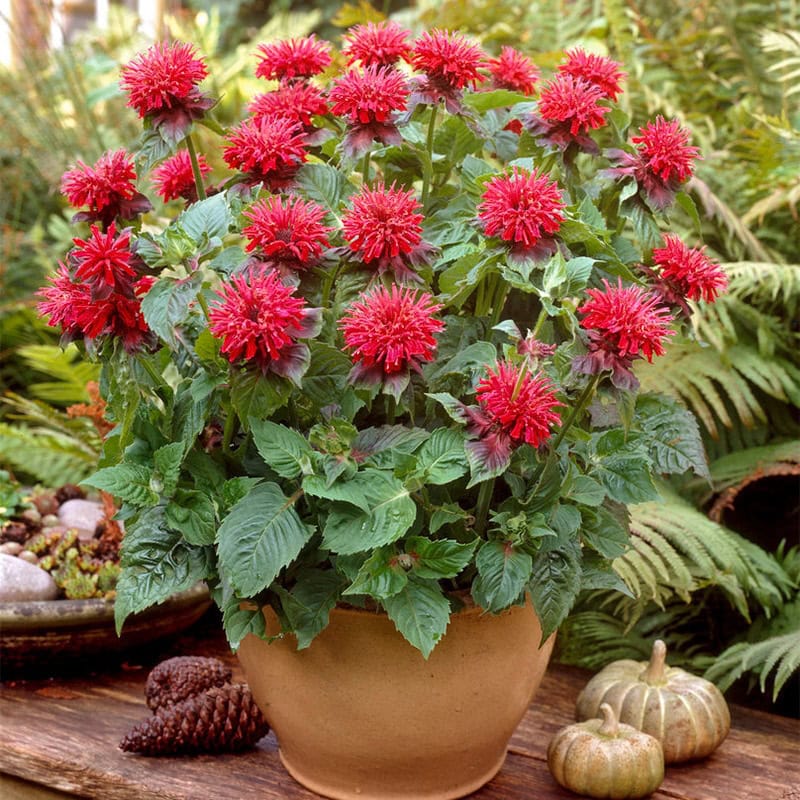
Bee balm is a fantastic addition to your bee-friendly pots, drawing in these vital pollinators with its fragrant blooms.
This perennial plant thrives in full sun and can tolerate partial shade, making it versatile for various garden spots. Its vibrant flowers, typically in shades of red, purple, or pink, not only attract bees but also butterflies and hummingbirds.
To care for your bee balm, ensure it’s planted in well-drained soil and water it regularly during dry spells. Pruning spent blooms encourages new growth and keeps the plant looking tidy.
Plus, bee balm’s aromatic leaves can even be used to make herbal teas. Adding this delightful plant to your collection will create a bustling habitat for bees and enhance your garden’s beauty.
Aster
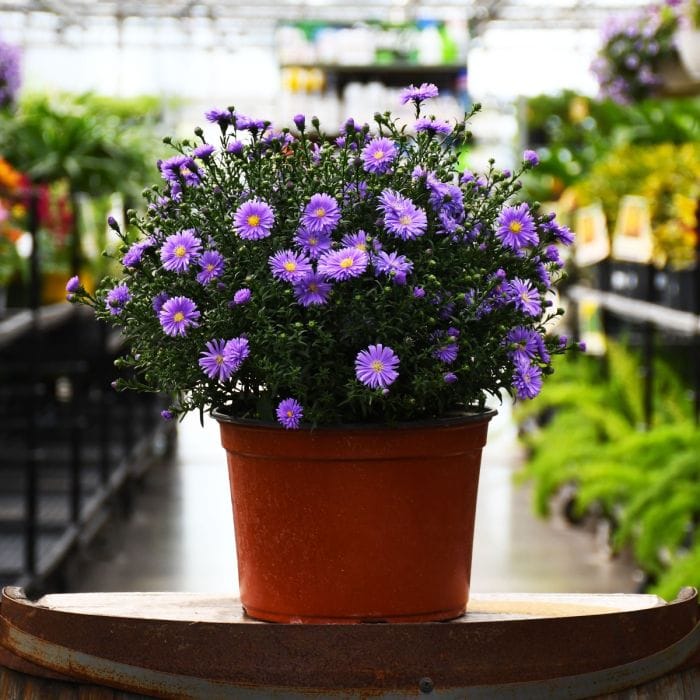
Asters are often a reliable choice for attracting bees to your pots, thanks to their vibrant, daisy-like flowers that bloom in late summer and fall.
These cheerful blooms provide a crucial food source for bees as they prepare for winter. When planting asters, choose a sunny spot, as they thrive in full sun and well-drained soil.
You’ll love how easy they’re to care for; just water them regularly, especially during dry spells. Plus, their varied colors—from purple to pink and white—make your pots visually appealing.
To keep your aster plants healthy and encourage even more blooms, deadhead spent flowers throughout the season.
Thyme

Thyme is a fantastic addition to your pots, not only for its culinary uses but also for its ability to attract bees. This aromatic herb thrives in well-drained soil and loves full sun, making it easy to care for.
You can plant different varieties like creeping thyme or lemon thyme to add diversity to your garden and benefit local pollinators. As the flowers bloom in summer, they provide a rich source of nectar, drawing in bees and other beneficial insects.
Plus, it’s a drought-tolerant plant, so you won’t have to worry about constant watering. Just remember to trim it back after flowering to encourage bushier growth.
Your pots won’t only look beautiful but also support the vital bee population.
Sunflowers
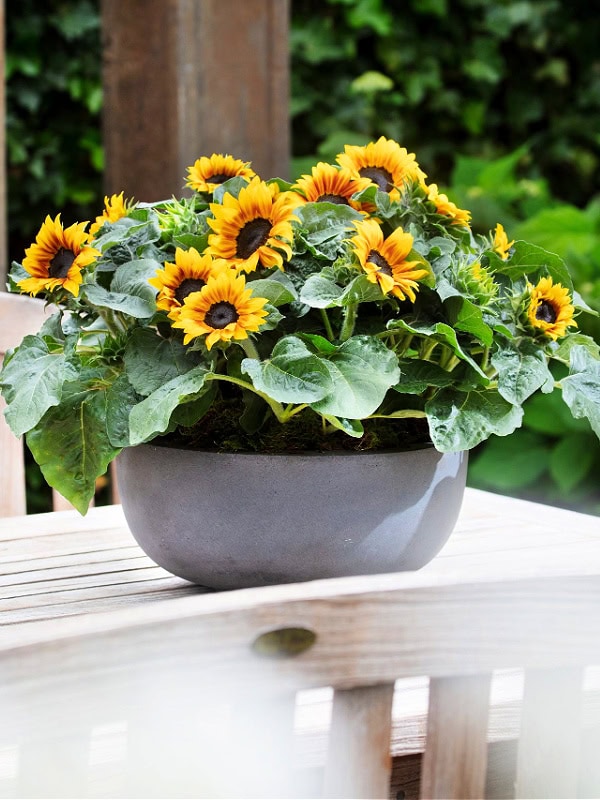
Adding sunflowers to your pots brings a vibrant splash of color while also serving as a fantastic nectar source for bees. These cheerful blooms aren’t only eye-catching but also easy to grow, making them an excellent choice for your garden.
If you’re short on space, consider dwarf varieties that thrive in containers. Position your pots in full sun to encourage healthy growth and maximize their appeal to pollinators.
Bees are particularly attracted to the large, open-faced flowers, which provide easy access to nectar. To keep your sunflowers blooming, deadhead spent flowers regularly, promoting more blooms throughout the season.
With their sunny disposition and bee-friendly qualities, sunflowers can elevate your garden while supporting local pollinator populations.
Borage

While you might be familiar with borage as a culinary herb, it’s also a fantastic addition to your pots for attracting bees. This vibrant plant boasts striking blue flowers that bloom from late spring to early fall, offering a continuous source of nectar. Bees absolutely love borage, so planting it can significantly increase your garden’s pollination activity.
Borage is easy to grow and prefers full sun with well-draining soil. It thrives in pots and doesn’t require much maintenance, making it perfect for busy gardeners.
Plus, it’s edible! You can use its leaves and flowers to garnish salads or make herbal teas. By adding borage to your collection, you’ll create a beautiful, bee-friendly environment in your garden.
Frequently Asked Questions
Can I Grow These Plants Indoors for Bees?
You can grow some plants indoors that attract bees, but keep in mind they need adequate sunlight and space.
Consider using pots with good drainage and ensuring your indoor environment supports their growth effectively.
How Often Should I Water Bee-Friendly Potted Plants?
You should water your bee-friendly potted plants regularly, ensuring the soil stays moist but not soggy.
Check the top inch of soil; if it’s dry, it’s time to water again.
Adjust based on humidity.
Do These Plants Attract Bees Year-Round?
Yes, many bee-friendly plants attract bees year-round, but their activity depends on seasonal blooms.
You should choose a variety of plants that flower in different seasons to ensure bees visit throughout the year.
Are Any of These Plants Toxic to Pets?
Some plants can be toxic to pets, so it’s crucial you research each species.
Always check for pet safety before bringing new greenery home, ensuring your furry friends stay safe while you enjoy your plants.
How Do I Attract More Bees to My Garden?
To attract more bees to your garden, plant colorful flowers, avoid pesticides, and create a diverse habitat with native plants.
Providing water sources and shelter will also encourage these important pollinators to visit your space.
Conclusion
Creating a bee-friendly garden in pots is both rewarding and simple with these top 10 plants. By choosing vibrant blooms like Lavender and Zinnias, you’ll not only beautify your space but also support local pollinators. Herbs like Thyme and Borage add extra benefits, enhancing your garden’s aroma and culinary flair. With a mix of colors and scents, your container garden will thrive while attracting bees, making it a haven for these essential creatures. Happy planting!
No posts